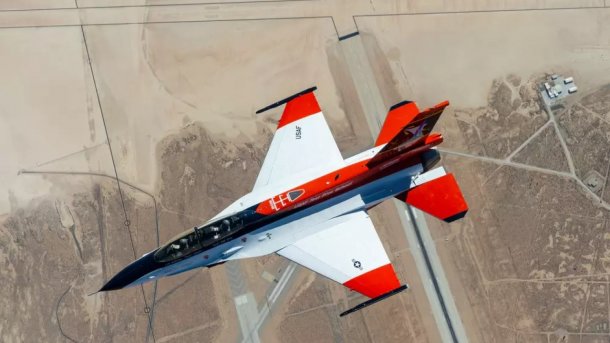US Air Force: Autonomously controlled fighter aircraft conducts first "dogfight"
The US military has been testing AI technology. Now a test aircraft has performed a high-speed turning manoeuvre. The winner of the dogfight is undisclosed.

The X-62A experimental aircraft
(Bild: Air Force photo by Kyle Brasier)
For the first time, the US Air Force has conducted a direct dogfight between two fighter planes in which one of the two was controlled completely autonomously. The US Air Force has now made this public; the "dogfight" was already flown last year. As those responsible explain, a converted F-16 was used for this. Two test pilots were on board the X-62A test aircraft, who could have intervened at any time. However, this was not necessary. Defensive maneuvers were flown first during the exercise, after which the two fighter planes were pitted directly against each other. At speeds of up to 1900 km/h, the aircraft came within 600 m of each other. However, the winner is not disclosed.
Only an intermediate step
The so-called "dogfight" - or curve fight - is particularly complex, explain the US Air Force officials. It involves two fighter planes trying to get behind each other in the air so that they can shoot each other down. During the exercise, the modified test aircraft proved "that the use of non-deterministic AI in aerospace is possible". At the same time, however, the aim was not to develop an AI specifically for this particularly challenging form of aerial combat. Instead, it laid the foundation for further tests with the AI control of fighter aircraft in the air.
The dogfight between a human-controlled fighter aircraft and an autonomously flying one is not the US Air Force's first test with AI technology. A year ago, the US Air Force made it public that the retrofitted experimental aircraft had flown autonomously for more than 17 hours. It was the first time that AI technology had been used in a tactical aircraft. The supersonic jet is designed in such a way that new systems can be tested on it. Thanks to the open system architecture and software adaptations, it is possible to imitate various performance characteristics of other aircraft on the aircraft.
(mho)